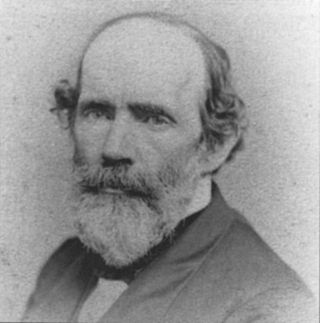
John Cassin was an American ornithologist from Pennsylvania. He worked as curator and Vice President at the Philadelphia Academy of Natural Sciences and focused on the systemic classification of the Academy's extensive collection of birds. He was one of the founders of the Delaware County Institute of Science and published several books describing 194 new species of birds. Five species of North American birds, a cicada and a mineral are named in his honor.

Thomas Say was an American entomologist, conchologist, and herpetologist. His studies of insects and shells, numerous contributions to scientific journals, and scientific expeditions to Florida, Georgia, the Rocky Mountains, Mexico, and elsewhere made him an internationally known naturalist. Say has been called the father of American descriptive entomology and American conchology. He served as librarian for the Academy of Natural Sciences of Philadelphia, curator at the American Philosophical Society, and professor of natural history at the University of Pennsylvania.
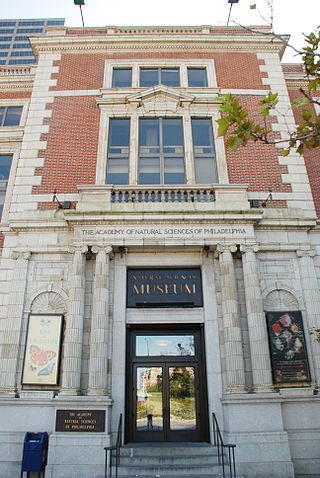
The Academy of Natural Sciences of Drexel University, formerly the Academy of Natural Sciences of Philadelphia, is the oldest natural science research institution and museum in the Americas. It was founded in 1812, by many of the leading naturalists of the young American republic with an expressed mission of "the encouragement and cultivation of the sciences". It has sponsored expeditions, conducted original environmental and systematics research, and amassed natural history collections containing more than 17 million specimens. The Academy also organizes public exhibits and educational programs for both schools and the general public.
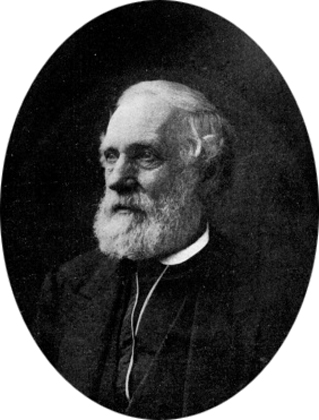
Titian Ramsay Peale was an American artist, naturalist, and explorer from Philadelphia, Pennsylvania. He was a scientific illustrator whose paintings and drawings of wildlife are known for their beauty and accuracy.
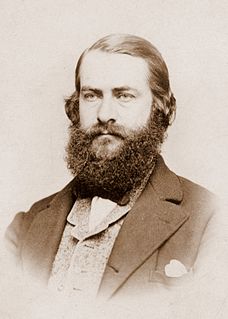
Joseph Mellick Leidy was an American paleontologist, parasitologist and anatomist.

Gerrit Smith Miller Jr., was an American zoologist and botanist.

Merritt Lyndon Fernald was an American botanist. He was a respected scholar of the taxonomy and phytogeography of the vascular plant flora of temperate eastern North America. During his career, Fernald published more than 850 scientific papers and wrote and edited the seventh and eighth editions of Gray's Manual of Botany. Fernald coauthored the book Edible Wild Plants of Eastern North America in 1919–1920 with Alfred Kinsey, which was published in 1943.
Henry Weed Fowler was an American zoologist born in Holmesburg, Pennsylvania.

Isaac Lea was an American publisher, conchologist and geologist. He was a partner in the publishing businesses Matthew Carey & Sons; Carey, Lea & Carey; Carey, Lea & Blanchard; and Lea & Blanchard.
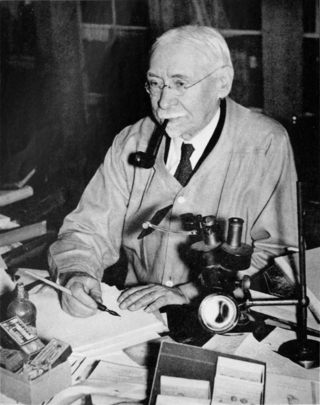
Henry Augustus Pilsbry was an American biologist, malacologist and carcinologist, among other areas of study. He was a dominant presence in many fields of invertebrate taxonomy for the better part of a century. For much of his career, his authority with respect to the classification of certain substantial groups of organisms was unchallenged: barnacles, chitons, North American terrestrial mollusks, and others.
The Mahomet mouse is a species of rodent in the family Muridae. It is found in Ethiopia, Kenya, and Uganda. Its natural habitats are subtropical or tropical moist montane forests and subtropical or tropical high-altitude shrubland. It is threatened by habitat loss.

The Yucatán spiny-tailed iguana is a species of lizard in the family Iguanidae. It is endemic to northern Yucatán, Mexico.

Orycteocetus is an extinct genus of sperm whale from the Miocene of the northern Atlantic Ocean.

George Duryea Hulst was an American clergyman, botanist and entomologist.

James Brackenridge Clemens was an American entomologist who specialized in Lepidoptera. He described many new species. His collection of microlepidoptera is in the Academy of Natural Sciences of Philadelphia.
The Leidy Award is a medal and prize presented by the Academy of Natural Sciences of Drexel University, Philadelphia, Pennsylvania, USA. It was named after US palaeontologist Joseph Leidy. The award was established in 1923 to recognize excellence in "publications, explorations, discoveries or research in the natural sciences", and was intended to be presented every three years. The award consists of a rectangular bronze medal and an honorarium which was initially $5000.
The Hayden Memorial Geological Award is presented by the Academy of Natural Sciences of Drexel University, Philadelphia, Pennsylvania, USA. It was named after US geologist Ferdinand Vandeveer Hayden. The award was established in 1888 and first awarded in 1890.
Annie Elisabeth Law (1842–1889) was a British-American conchologist, who discovered 11 species and one genus of mollusks, but did not publish formal descriptions of them.
Navicula alaskana is a species of algae in the genus Navicula which occurs in Northern Alaska.

Howard Radclyffe Roberts Jr. was an American entomologist known for his work on grasshoppers. His 1941 University of Pennsylvania Ph.D. dissertation was an early work highlighting the role phallic structures could play in grasshopper taxonomy. While serving in World War II, he and Edward Shearman Ross cowrote The Mosquito Atlas, used by the armed forces to identify malaria-transmitting mosquitos. Roberts worked for the Academy of Natural Sciences of Philadelphia (ANSP), serving as its managing director from 1947 to 1972. He described dozens of grasshopper species from North and South America, and also is the eponym of several taxa named in his honor.














